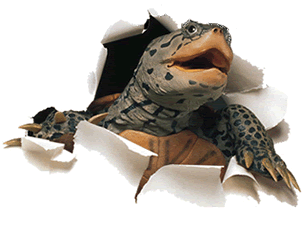Physics Alumnus' Journey Leads to Familiar Grounds
When Rich Barber Jr. gives advice, he’s speaking from experience. Through years of trials and errors, he’s found a position that’s rewarding and familiar. As the Physics Chair at Santa Clara University in California’s Silicon Valley, Barber enjoys the environment of his institution, which is very similar to the place where he received his undergraduate degree.
Barber grew up in Mooresville, NC. He earned his bachelor’s degree, in Physics, from Davidson College; a small liberal arts college near Charlotte, NC. After graduating, he searched for an institution with a broad range of possibilities to obtain a doctoral research degree.
“Maryland had just about everything,” said Barber.
In 1990, Barber received his Ph.D. His research work was under Professor Rolfe E. Glover, III. His dissertation was entitled, “The Onset of Conduction and Superconductivity in this Pb films.” At Maryland, he always felt appereciated.
"I think the graduate students were respected as a vital resource in the department, " said Barber. "For such a big department it seemed small because of the feeling of community...
There were certainly the 'big university' red tape issues, but there always seemed to be an Earlene Bradley/ Jane Hessing or Lorraine DeSalvo to help fix them."
After Maryland, Barber was a post-doc at UC San Diego, with Bob Dynes. There, he helped set up a lab and studied the superconductor-insulator transition in disordered films. Then, he decided to take a different path.
“In 1993, the job market was pretty bad,” said Barber. “I tried a second post-doc position in physical oceanography. That was a good experience, because I learned that I did not want to do oceanography.”
As Barber began his search for yet another faculty position, he was hired at Santa Clara University. Here, he has continued work on disordered superconductors and also some new research on polymer photovoltaics. Since starting with the University in 1995, Barber built a laboratory where he studies superconductivity and other low-temperature phenomena. Recently, he completed a sabbatical at Laboratory for Physical Sciences in College Park. This current position often reminds Barber of his past.
“Santa Clara is a liberal arts university (no physics graduate students), “Said Barber. “This fact presents both challenges and opportunities. The undergraduates are very good and very motivated. They can do significant research, and they are a delight to teach in the lab and the classroom. It is an environment not unlike my own undergraduate experience.”
Now, Barber finds himself in a great position as Physics Chair at Santa Clara University. He offers this advice to current students:
” Don’t be afraid to try things that might not work out, you’ll probably learn more from the failures anyway. When you are looking for a job, be yourself. When we hire faculty we look for the best match, not simply the ‘best’ scientist.”

